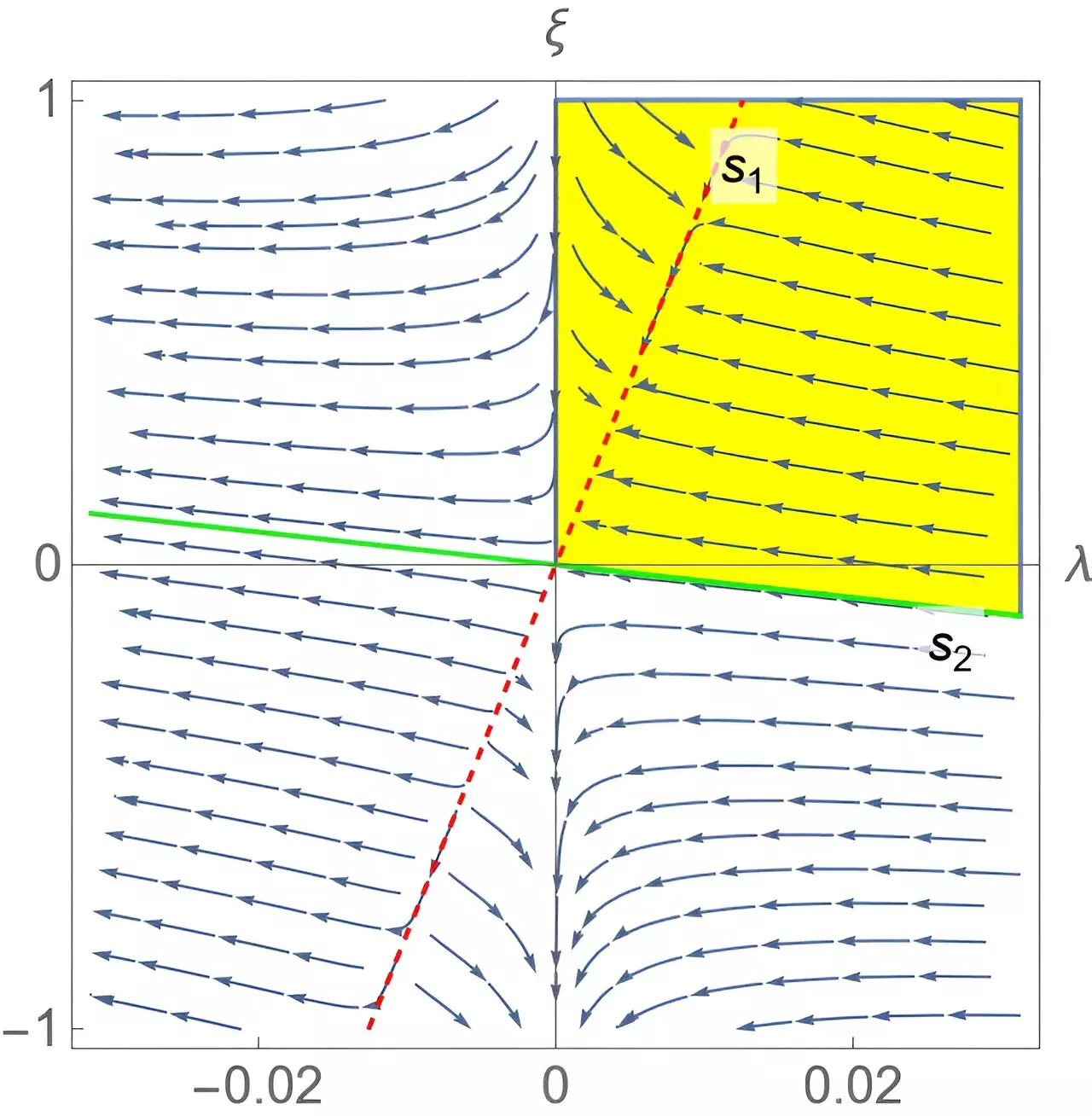In a realm of theoretical physics often reserved for lofty ideas and intricate equations, recent advancements in quadratic gravity are unveiling exciting possibilities. Researchers from the International School for Advanced Studies in Trieste, alongside teams from the University of Massachusetts and Brazil’s Instituto de Física Teórica at Universidade Estadual Paulista, have taken significant steps to reformulate our understanding of gravity through an approach amplifying the role of quadratic terms in Einstein’s equation—a fundamental framework that governs gravity. This fresh perspective, captured in their paper published in *Physical Review Letters*, holds promise not just for academic debates but for actual applications amidst the complex tapestry of gravitational phenomena.
Quadratic gravity works by enhancing Einstein’s classic general relativity with innovative components—namely, local terms that are quadratic in curvature. This addition elevates the theory beyond its traditional interpretations, suggesting a trajectory rich in potential benefits for addressing both quantum and classical concerns. Such advancements indicate an exciting path, charting new territories in the intersection of quantum mechanics and general relativity—the very cornerstones of modern physics.
Unraveling the Mysteries of Beta Functions
At the heart of the research lies a thorough investigation of beta functions, which are pivotal when tracing how coupling constants evolve over varying energy scales—a process termed “running.” John Donoghue, a prominent voice in the research, elucidates this with clarity, emphasizing that beta functions may reveal crucial insights into how field theories behave at elevated energy levels. The relevance of this work cannot be overstated; as physicists grapple with the enigmatic behavior of quantum gravity, understanding these intricate relationships could lead to groundbreaking discoveries.
The significance of coupling constants cannot be overlooked, as they characterize the strength and nature of interactions within a quantum field. Yet, the challenge of accurately calculating their running in quadratic gravity has long perplexed researchers. The study at hand showcases pioneering techniques developed by Donoghue, Gabriel Menezes, and their team that demonstrate a newfound ability to calculate these couplings reliably. Such progress is not merely academic; it reflects a vivid landscape of potential applications that could reshape our grasp of high-energy physics.
Asymptotic Freedom: A Game Changer
One particularly luminous finding of this study hints at the capacity for quadratic gravity couplings to achieve small values as energy escalates, pointing toward a phenomenon known as asymptotic freedom. This could signify a landscape where interactions diminish instead of escalating into uncontrollable behaviors—a highly sought trait in physical theories aiming to resolve the hierarchy problem and other fundamental concerns. The impasse many theorists face, grappling with the emergence of unwanted particles, can potentially be circumvented through the asymptotic behavior showcased by quadratic gravity.
The research carries profound implications for our comprehension of high-energy behaviors and the stability of particle interactions. The absence of tachyonic states—particles indicative of instability—in these new frameworks infers a gracefully operating theory that could withstand rigorous scrutiny. While skepticism often accompanies new theories in physics, the high-energy characteristics displayed by quadratic gravity present a promising dimension that blends theoretical rigor with experimental potential.
Broader Impacts and Future Trajectories
Emphasizing the novelty of their approach, Donoghue and his colleagues have ventured into relatively uncharted territory, where the intersections of quantum mechanics and gravity offer rich avenues for exploration. Their work not only brings forth fresh methodologies but instills a renewed vitality to discussions revolving around quantum gravity theories. The enthusiasm is palpable—as they see their findings not just as a singular achievement but as an opening to broader inquiries into gravitational behavior under extreme conditions.
With well-established theories like quantum electrodynamics and quantum chromodynamics leading the way, the ambition is to establish a robust quantum field theory of gravity that can consistently account for observed phenomena. The discussions surrounding scattering amplitudes and cross-sections within quadratic gravity represent tantalizing milestones on this journey. Leveraging these insights, researchers may soon find themselves closer to integrating gravity into the unified framework of fundamental forces.
The underlying grit exhibited by these researchers speaks volumes not only about their dedication but also about the transformative potential locked within the intricate fabric of quantum gravity. The conversation isn’t merely about theories; it’s about embracing unfathomable wisdom while daring to unlock the mysteries that govern our universe. As the frontier of science continually evolves, the dialogues initiated around quadratic gravity will surely inspire future generations to probe deeper into the cosmos and its myriad secrets.

